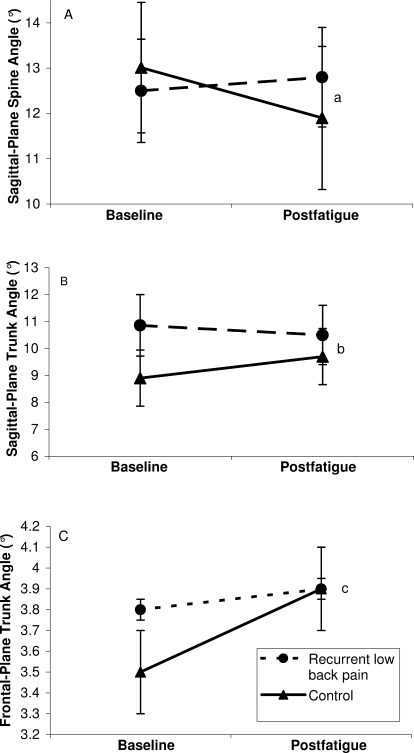Figure 3.
Peak sagittal-plane spine (A) and trunk (B) and frontal-plane trunk (C) angles (mean ± SEM) measured during the loading phase of jogging gait before (baseline) and after fatiguing isometric lumbar extension exercise. The control group exhibited reduced sagittal-plane spine (a P = .02) and trunk (b P = .04) angles and frontal-plane trunk (c P = .05) angles postexercise, whereas the group with low back pain did not (P = .62, P = .62, and P = .22, respectively). Greater spine angle values indicate greater lumbar lordosis, and greater trunk angles indicate greater trunk flexion and lateral flexion in the sagittal plane and frontal plane, respectively.

